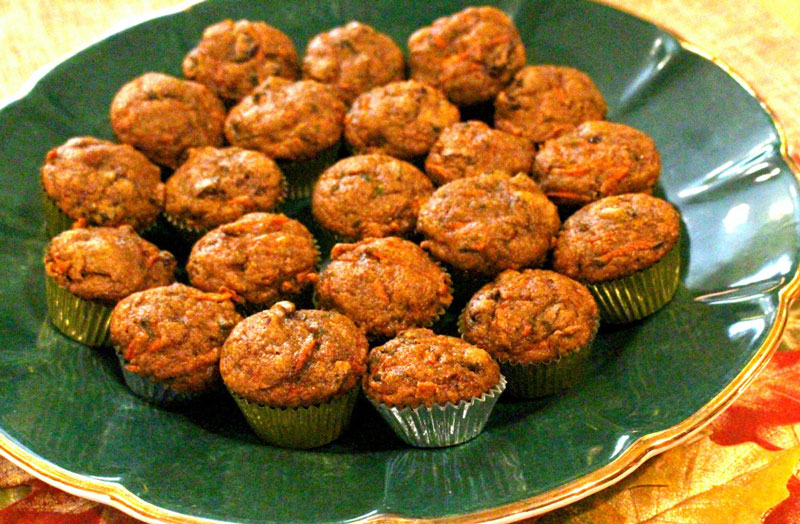January is the month of resolutions. Each year a significant portion of resolutions have to do with dieting and weight loss. Yet you have probably heard that diets don’t work. As many as 90% of successful dieters end up gaining their weight back and more within 6 months. Further, repeated dieting has been linked to health problems such as obesity, diabetes, weight loss resistance, and even eating disorders.
Imagine this January making a different kind of resolution? A resolution focused on increasing health and wellness versus decreasing your pants size. In my experience as a health coach and a recovering dieter, I have found that only health related resolutions tend to stick and that healthy changes in diet do more to lower and stabilize my weight than any fad diet ever has.
I propose that the single most profound resolution you can make this January is to increase your daily intake of vegetables. Did you hear me? I didn’t say take your favorite foods away or put yourself in diet deprivation. I am saying ADD something to your life—the healing, weight regulating, disease preventing miracle of fresh vegetables.
Vegetables do much to promote weight loss and general wellness. The fiber in vegetables keeps you full and satisfied longer, allowing you to eat less overall.
Of course, any vegetables you eat that you didn’t eat before will improve your health and possibly help you lose weight, but to maximize the nutritional impact of your vegetables buy the freshest organic vegetables you can find in all the colors of the rainbow, and then add them to everything.
Here are some of my favorite methods for maximizing vegetables in a diet:
- When making soups, stews or casseroles, literally double the amount of vegetables called for in the recipe. Consider adding greens to every soup or stew and even casseroles and pasta dishes.
- Add shredded vegetables like zucchini, carrots, turnips, or broccoli stems to taco meat, meatloaves, meatballs.
- Instead of making a vegetable and a starch for your meals consider making two veggie sides more days than not.
- Use pureed vegetables in sauces. Carrots and zucchini cooked in pasta sauce and then pureed makes a wonderfully sweet marinara sauce that negates the need for added sugar. Pureed cauliflower makes great alfredo sauce or “gravy” when added to bone broth or stock.
- Eat at eat least one salad a day. Swap out iceberg and romaine for lettuces with more nutrient density like spinach arugula, kale, and baby dark greens. Remember to add lots of vegetables on top!
- Always serve vegetables with dips and/or cheese and crackers when entertaining. Consciously eat the vegetables before diving into the crackers or bread.
- Use shredded or pureed vegetables in baked goods. This practice adds moisture, vitamins, fiber and micronutrients to otherwise often unhealthy treats.
The last suggestion to add veggies to baked goods is a favorite of my clients with families. It is amazing what can be made with added veggies—granola and snack bars, muffins, breads, and even cakes and cookies.
This month I offer a delicious winter favorite of mine—Pumpkin Carrot Muffins made with heart healthy, high fiber oats instead of regular flour. If you think you can get away with it, reduce the sugar further for an even healthier treat.
Gluten Free Pumpkin Carrot Muffins
Makes about 12 muffins
INGREDIENTS:
- 1 1/4 cups organic gluten free quick oats
- 1 teaspoon pumpkin pie spice
- 1/4 teaspoon ground cinnamon
- 1 teaspoon baking powder
- 1 teaspoon baking soda
- 1/2 teaspoon salt
- 2 large organic pastured eggs
- 1/3 cup pumpkin puree
- 1 teaspoon apple cider vinegar
- 1/2 cup coconut sugar
- 1/4 cup avocado oil, plus 1 tablespoon
- 1/3 cup organic raisins
- 1 cup shredded carrots
- Preheat oven to 325. Line muffins tins with paper liners.
- Place quick oats in a food processor and process until very finely ground to a flour. Place in a medium bowl. Add pumpkin pie spice, cinnamon, baking powder, baking soda, and salt and whisk until well combined.
- In a small bowl, whisk eggs, pumpkin puree, apple cider vinegar, coconut sugar, and avocado oil until well blended. Whisk egg mixture into flour mixture. Stir in raisins and shredded carrots.
- Divide among muffin tin cups (they should be filled close to the top). Bake about 11-12 minutes, or until tester comes out clean. Place on a cooling rack and allow to cool for 5 minutes. Carefully turn out onto cooling rack and cool, right side up, until ready to serve.
Julie Wern is a psychologist turned stay-at-home-mom turned health coach and cooking instructor. She is a certified Integrative Nutrition Health Coach and the author of Holcomb Farm CSA’s Simply Fresh blog (http://holcombfarm.org/blog), as well as her new food and lifestyle blog, The Wholesome Gourmande (http://www.thewholesomegourmande.com). It is Julie’s passion to help individuals find their unique path to health without sacrificing joy and pleasure in food. Contact Julie at: jwern@comcast.net for comments and inquiries.
